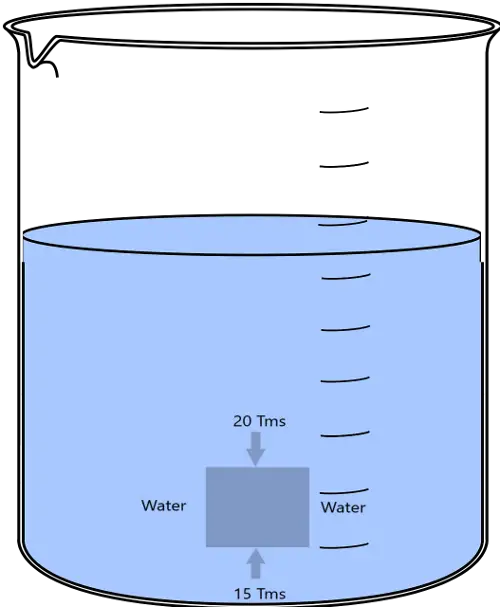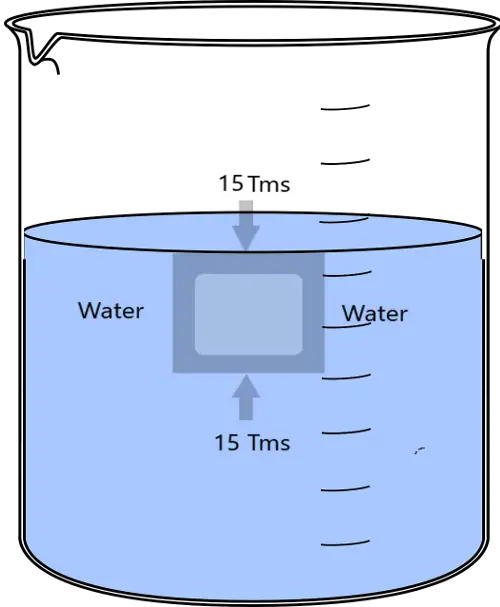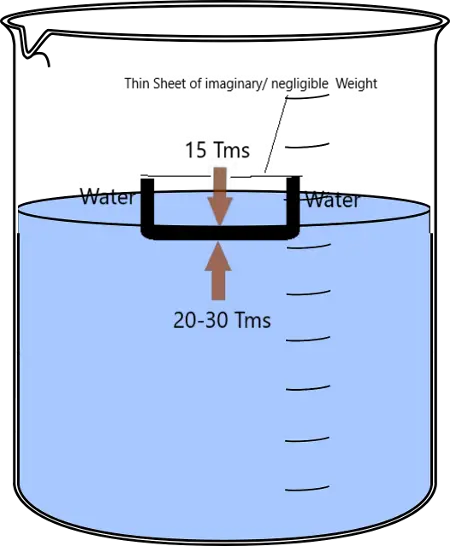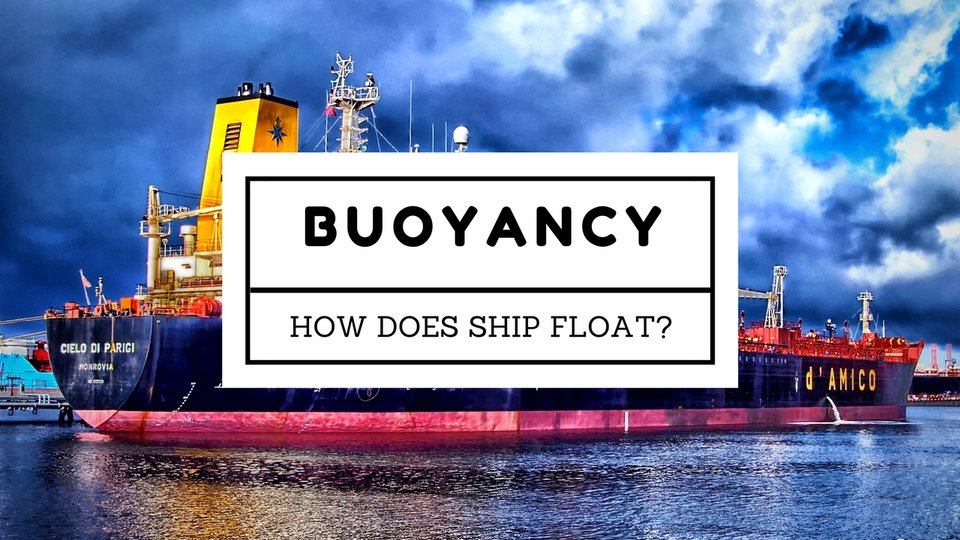Last Updated on April 25, 2018 by Amit Abhishek
Yesterday my little cousin asked me this question ” What are ship’s made of ? “. I answered; its steel, iron and other materials. Then he asked me another obvious question ” Why do ship float while nail sinks? “. That was an unexpected question from my 10 year old cousin; but i was relived that i can answer him with much helpful science.
I know; even when you disagree to have same question somewhere in your lifetime. You do accept it is the case for many! After all its common sense too see light thing float like wood, leaves and paper but heavy stuff sink like rocks and metal. Then why a stone being small and light in comparison with the ship sinks while a ship float?
Let me tell you why ” Eureka-Eureka”; the science behind floating was discovered by a Greek scientist named Archimedes. He realize that when something is put in water, it brought enough water out of its way to make space for itself.
Why do Ship Float?
Reason 1: Archimedes Principle
You must have known of the mysterious force called gravity that pulls everything down towards the earth (Bottom surface). But do you know there is a similar but opposite force around called buoyancy? This is that force that makes the ship to float but stone or needle to sink. But to understand what it is and how its work; Lets understand the Archimedes principle.
The Archenemies principle states that ” When a body is fully or partially submerged, an upward buoyant force is exerted equal and opposite to the weight of the fluid / liquid displaced.” Think of it as the case where a women wearing a pencil heel shoe will sink on a wet ground but a man with a flip flop won’t.
Well that was a better example to explain effects of pressure then for buoyancy but it help explain why do something float ?; Due to their similarity. Here the girl would sink due to low surface area of her shoes. Similarly a metal block with high surface area in comparison with its weight is likely to float while with low surface area it don’t have a chance. But increasing just surface area does not have required effects unless you redesign the structure for maximum buoyancy.
If you had ever done an experiment on Archenemies principle in schools or college; you must would wonder how a 15 cubic meter metal block which produces 15 metric ton of buoyancy with 20 metric ton weight could ever float? But i say it will float with few modifications.
Let me Explain Why?
To solve your concern, Let me start with the idea of having a 15 cubic meter metal cube.
Case 1:
We will take a bucket full of water and put the cube on its surface. And what we see is; it went down to the bottom with a splash. Why that happened? Here the cube of 20 metric ton produce upward buoyant force of only 15 metric ton. So we left out with 5 metric ton weight that pulls it down to the bottom. In other words, the weight of water displaced is less than its weight.

Case 2:
Now suppose we made some change in its structure to equalize its buyout force and the weight. It can be done either by increasing the surface area for the same material or removing weight from the same cube through machining or cutting. Now after removing a significant amount of material in a desired way; we left with a hollow cube of 15 metric ton. Now when we put the cube in bucket full of water; you will find it got submerged but don’t sink to the bottom. In other words; here, the weight of water displaced is equal to its actual weight.

Case 3:
This time we would not only make a design from the original cube that have low weight but also improve its surface area. Now the modified cube is made to have a hollow part and a increased surface area of 20 to 30 square meter depending upon design. Now if we try to put this object on the surface of water; it will float just like a ship or a leaf on the water surface. But why and How?
Here the buyout force is 20/30 metric ton based on design, while the weight is still the 15 metric ton. This surplus buyout force of 5 to 15 metric ton make the cube to float. similarly an increased surface area and hollow structure make a ship float not sink.

Reason 2: Density
Have you wondered why oil ( most of them ) floats on top of water? It is because they have much lower density than that of water. The key to ” Why ship float? ” lies in its average density. Density is mass upon volume. What it means is; you can increase or decrease the density of an object by changing its volume.
On Average a ship is designed to have much lower density than the water. Although density of steel is much more than water but average density also accounts for the free space or empty space. A ship is large hollow construction with just enough free / hollow space with trapped air to reduce its average density.
That is the reason why a ship without cargo have much more freeboard ( Space of ship above the sea/ water ); while a ship loaded with cargo sail lower in the water. The empty holds / Cargo Space reduces its average density while loading more increase. Sometimes some of these empty space or holds or tanks are deliberately filled to control dangerously low average density. This is done to maintain ship stability by blasting and deblasting operations.
Conclusion
After explaining the role of density and buoyancy in determining what will float and what sinks; especially how ship float! It was no surprise that i tell my cousin “you can make anything float as long as you create enough upward buoyancy and lower average density.” But many other factors apart from the two like Center of gravity and buoyancy, Meta centric height, meta-center etc affects the ship stability. This i will discuss in my future Article.
#Note: I will look forward for your helpful comment and recommendations to improve this Article (Why Do Ship Float on Water but Needle Sinks?)
Also Read:
- What are Centrifugal Pumps? – Types, Working & Maintenance
- How Rotocap Works? – Theory, Working and Function
- Tappet Clearance – Requirement, Measurement & Adjustments
- Hydrophore System in Ship
- Boiler Water Treatment in Marine Boilers


the illustrations (case 2) must be referenced to density instead weight and buoyancy. when the weight is equal to the buoyancy it will float, for knowing the conditions of floating it is neccesary know the density relative to the fluid’s density.
I totally agree with you Sir! There I could have refer it better with density than buoyancy; but the only problem was, that i was explaining the process under buoyancy sub category, so i tried my best to explain it that way. Thank you for letting us know of your views – Have a good day!